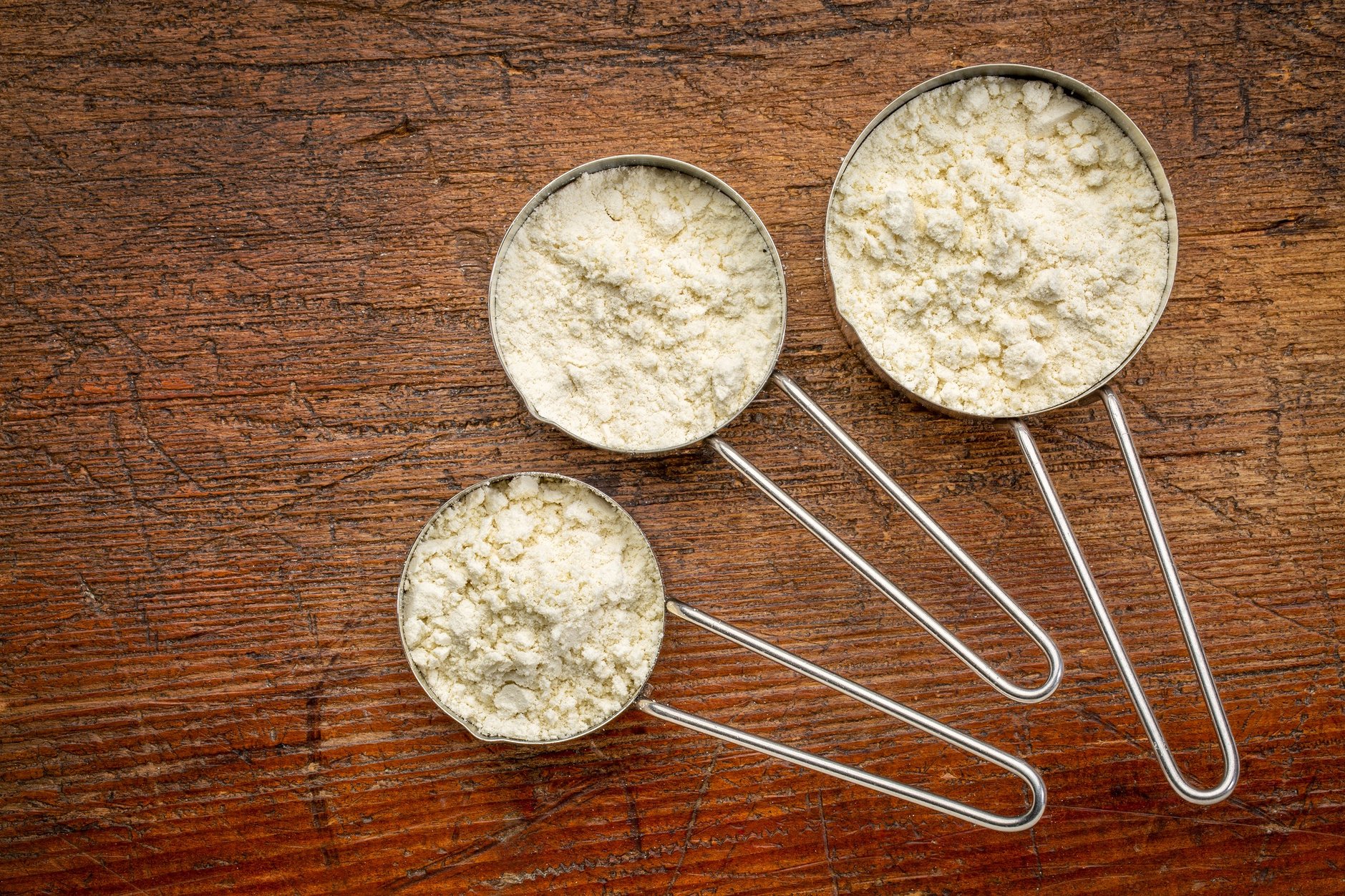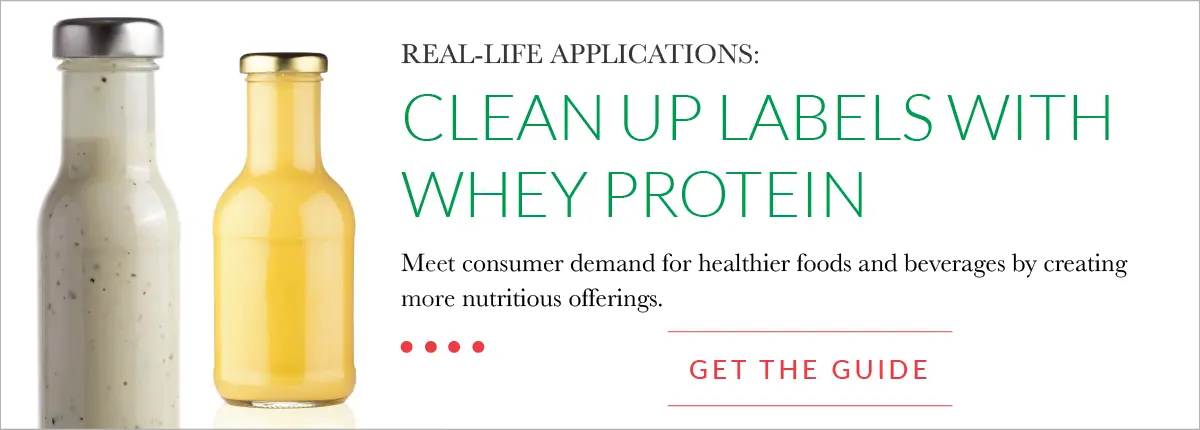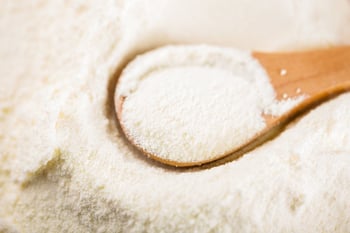
Unlike some food trends, the all-natural food trend has serious staying power and shows no signs of slowing. According to the 2023 Food and Health Survey, 40% of consumers purchase products labeled as “natural,” and more than half (52%) follow a specific eating pattern to improve health and wellness.
For many, however, the definition of “natural” varies widely. Some consumers are satisfied if they can simply pronounce the ingredients listed on food labels, while others insist on products that are ethically sourced and “free from” a host of ingredients.
What makes a product “natural,” and does whey protein concentrate qualify? A lot depends on how the whey protein is made. Truth is, not all whey protein producers can claim that their ingredients are natural because of their production methods and the lengths they have to go to to make it perform the way they intended.
FDA Guidelines for Natural Claims
The U.S. Food and Drug Administration (FDA) and the U.S. Department of Agriculture’s Food Safety and Inspection Service (FSIS) call for no added artificial or synthetic ingredients or colors. However, they have yet to implement hard and fast rules for labeling food as natural; they’ve only issued policies, not regulations.
Including an “all natural” description and claims about environmental sustainability on food products influence consumer perceptions. Unfortunately, they’re left to make their own assumptions about those claims, and FDA guidelines fail to address many production, processing or manufacturing methods of natural products.
This ambiguity has led to misperceptions about whether some ingredients are, in fact, “clean” and “natural” — including whey protein concentrate (WPC). We’ll clear up the confusion by answering a few frequently asked questions about our functional whey protein products.
RELATED: What are Functional Ingredients? Our Food Scientists Weigh In
1. How is Whey Protein Concentrate Made at Grande Custom Ingredients Group?
Whey is derived from the cheesemaking process and is a completely natural ingredient, as has been the case for more than 4,000 years.
The raw material in whey-based ingredients is milk. Grande’s milk is produced on dedicated Midwest dairy farms where it is ethically sourced and tested to make sure it’s free of antibiotics and impurities. From there, it's taken directly to our Grande cheese production facility where it goes through another round of tests and is properly pasteurized to ensure safety.
During the cheesemaking process, the curd is physically separated from the whey. The curd is made into white Italian cheese while the leftover whey is drained, clarified and sent to the whey production area of the facility. After another round of testing and pasteurization, the water is removed and the product is filtered using a proprietary method to extract the protein.
Once the liquid whey protein is concentrated, it’s spray-dried and packaged for distribution to food manufacturers. Grande’s chain of custody guarantees a safe, secure and consistent product each and every day.
Where food comes from is important to consumers, with one-third of Americans (34%) saying environmental sustainability is highly impactful on their decisions to buy foods and beverages.
2. Is Whey Protein Concentrate Natural?
Whey protein is a concentrate, much like other natural concentrated food products (frozen juice concentrate, tomato paste, granulated sugar, etc.). Grande Custom Ingredients Group’s whey protein products are also all-natural, and manufacturers can label it as such.
Food manufacturers and consumers can be assured that Grande Custom Ingredients Group’s whey products are made with fresh, natural ingredients using only a natural production process with zero chemicals, additives or preservatives.
Our products are also free of artificial or added colors, such as annatto which is frequently added to cheese to give it a yellow or orange appearance. Because Grande products are made from white Italian cheese, no chemical whitening is required to maintain their creamy, white color. Other commodity whey protein powders collect their raw materials from multiple producers that use annatto or other coloring and need to whiten their products with titanium dioxide to create a consistent appearance when packaged.
What Are Different Types of Whey Protein & How Are They Used?
At Grande Custom Ingredients Group, various proprietary methods are used to produce several types of quality whey protein in its powdered forms, including:
- Grande Gusto Whey Protein Concentrate — Partially replaces heavy cream to improve texture, flavor and reduce fat and calories in soups, sauces and other creamy applications
- Grande Gusto Reduced Lactose Whey — Partially replaces fresh, processed or powdered cheese to improve texture, flavor and reduce sodium, fat and calories in cheese sauces and soups
- Grande Ultra Whey Protein Isolate (WPI) — Include in ready-to-drink (RTD) beverages, drink mixes and smoothies as a quality protein source to support muscle building and protein intake
- Grande Festo Hydrolyzed Whey Protein — Include in ground meat applications or meat seasoning blends to improve moisture retention and increase yield up to 5% without the need for masking agents
- Grande WPCrisp Whey Protein Crisps — A crunchy and clean-flavored form of protein used in protein bars, cereals, snacks and other foods with high protein content
- Grande Primo Dried Yogurt & Cultured Dairy — Authentic yogurt powder for use in coatings, frozen desserts, dressings, dips and more
RELATED: Hydrolyzed Whey Protein in Meat Products? New Concept. New Opportunities.
4. Is Whey Protein Concentrate Right For My Application?
Brands continue to look for ways to improve nutrition labels without straying too far from the product consumers fell in love with in the first place. With Grande Custom Ingredient Group’s extensive line of concentrated whey protein products, you can clean up your labels, improve nutrition and better align with consumer demand without compromising the taste and texture they love.
It’s not a matter of simply replacing artificial or high-fat ingredients with natural substitutes, however. Many formulation challenges need to be considered when incorporating whey protein. Our team of experienced food scientists will work with you to address these challenges and help you reformulate or customize a new application to meet your needs.
To learn more about how food manufacturers clean up their labels with our all-natural whey protein concentrate, view our helpful How Whey Protein Helps Food & Beverage Manufacturers Clean Up Their Labels ebook below.




